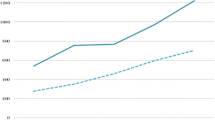Abstract
The role of the Pharmaceutical Management Agency (PHARMAC) is to manage pharmaceutical subsidy expenditure in New Zealand. PHARMAC has adopted a proactive approach. It selects the drugs that are to be subsidised and declines to subsidise others. It has established reference pricing across many drug groups, has entered into a range of innovative commercial contracts with pharmaceutical companies, and has encouraged greater price competition among pharmaceutical companies in order to lower prices and control expenditure risk.
These initiatives have all been part of an overarching strategy to improve the value of the government’s expenditure on pharmaceuticals. PHARMAC has also developed techniques of cost-utility analysis to assess the value of expenditure.
PHARMAC has slowed pharmaceutical expenditure growth, culminating in a fall in expenditure in the 1998/1999 year. At the same time, patient access has continued to expand, with more prescriptions being written and new drugs being subsidised. Therefore, PHARMAC has made dramatic strides to improve the value of the government’s expenditure on pharmaceutical subsidies and its actions have meant that more funds have been available for investment in other health services, than would have occurred if previous policies had remained unchanged.
Similar content being viewed by others
References
PHARMAC. The Pharmaceutical Schedule. Available from: URL: http://www.pharmac.govt.nz
Ministry of Health. Health expenditure in New Zealand, 1980–1997. Wellington: Ministry of Health, 1998
PHARMAC Annual Report and Ministry of Health Health Expenditure in New Zealand, 1980–1997. Wellington: Ministry of Health, 1998
Jacobzone S. Pharmaceutical pricing and expenditure drug policy and recent trends in pharmaceutical expenditure in OECD countries. OECD. In press
PHARMAC. Prescription for pharmacoeconomic analysis. Wellington: PHARMAC, 1999. Also available from: URL: http://www.pharmac.govt.nz [accessed 1999 Oct]
PHARMAC. The operating policies and procedures of Pharmaceutical Management Agency Limited July 1993. Wellington: PHARMAC, 1993. Also available from: URL: http://http://www.-pharmac.govt.nz
Reckitt and Colman v Pharmaceutical Management Agency Limited [1997] NZAR 464
Core Services Committee. Guidelines for the management of raised blood pressure in New Zealand. Wellington: Ministry of Health, 1995
Thomas MC, Mann J, Williams S. The impact of reference pricing on clinical lipid control. N Z Med J 1998; 111: 292–4. [See further correspondence in N Z Med J 1998; 111: 439–40]
MacKinven M. PHARMAC has work cut out to win GPs over. N Z Doctor 1999; 29 Sep: 4
Author information
Authors and Affiliations
Corresponding author
Rights and permissions
About this article
Cite this article
Braae, R., McNee, W. & Moore, D. Managing Pharmaceutical Expenditure while Increasing Access. Pharmacoeconomics 16, 649–660 (1999). https://doi.org/10.2165/00019053-199916060-00004
Published:
Issue Date:
DOI: https://doi.org/10.2165/00019053-199916060-00004



